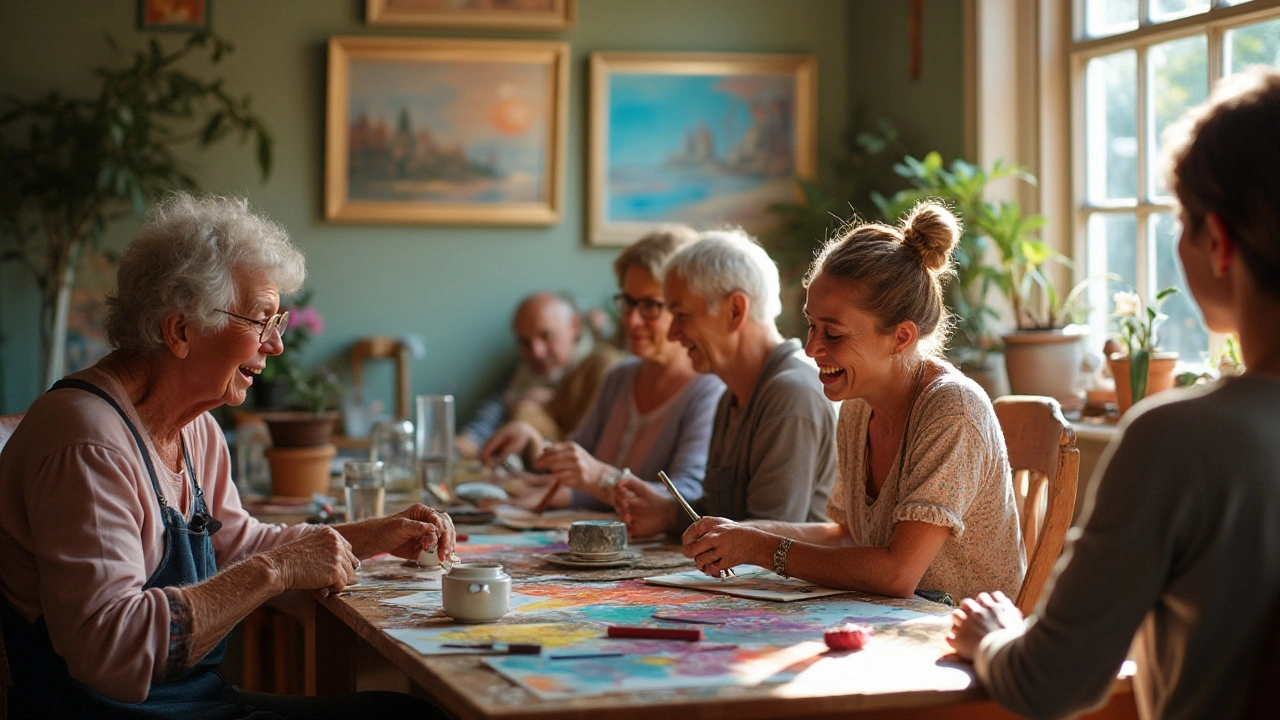Feeling stuck or tense? Creative therapy uses simple, hands-on activities—drawing, music, dance, drama, or writing—to change how you feel right now. It doesn’t need talent. You don’t have to be an artist. The point is movement, expression, and a different way to handle feelings when words aren’t enough.
Why it works: doing something creative shifts attention away from worry, activates parts of the brain tied to reward and focus, and helps you make sense of emotions without overthinking. People often report lower anxiety, clearer thinking, and better sleep after just a few sessions or regular short practices at home.
1) 10-minute free-draw: Set a timer for 10 minutes. No goals, no erasing. Let lines and shapes flow. Notice colors or patterns that pop up—those clues tell you what’s on your mind. This calms racing thoughts and helps you see stress outside your head.
2) Sound break: Make a five-minute playlist of three songs that match your mood. Spend the first song noticing tension, the second letting it move, the third imagining release. You can hum, clap, or tap along—movement makes the change stick.
3) Movement reset: Put on a song and move however your body wants for three minutes. No choreography. If you’re anxious, try big slow movements; if you’re low-energy, try quick small steps. Movement shifts nervous system tone fast.
4) One-line journal: Each morning write one honest line about how you feel. Keep it private. Over a week you’ll spot patterns and triggers without pressure to be profound.
These exercises are small but repeatable. Do them between meetings, before bed, or when you wake up. They work best when you practice regularly—five minutes most days beats one hour once a month.
Prefer quiet and private? Try drawing, journaling, or collage. Like sound and rhythm? Music or drumming fits. Enjoy moving with others? Dance or drama therapy can help with social anxiety and confidence. If you’re unsure, try a mix: a short walk, a single song, and a five-minute sketch. Notice which one helps you feel lighter.
If you have strong trauma, active suicidal thoughts, or severe panic attacks, creative exercises at home can help a bit but shouldn’t replace professional care. A trained creative arts therapist combines clinical skills with creative methods to guide healing safely.
Start small, keep it simple, and be curious. Creative therapy isn’t about making something perfect—it's a tool to feel differently, think clearer, and move through stress with less resistance. Try one quick exercise today and notice what changes.

Creative arts therapies can provide transformative experiences by utilizing creativity for healing and empowerment. These therapies include modalities like art, music, dance, and drama, each offering unique paths to emotional wellness. By harnessing creativity, individuals can process complex emotions, develop self-awareness, and enhance mental health. Practical tips and insights on how to incorporate creative practices into daily life can lead to personal growth and empowerment.
Read More